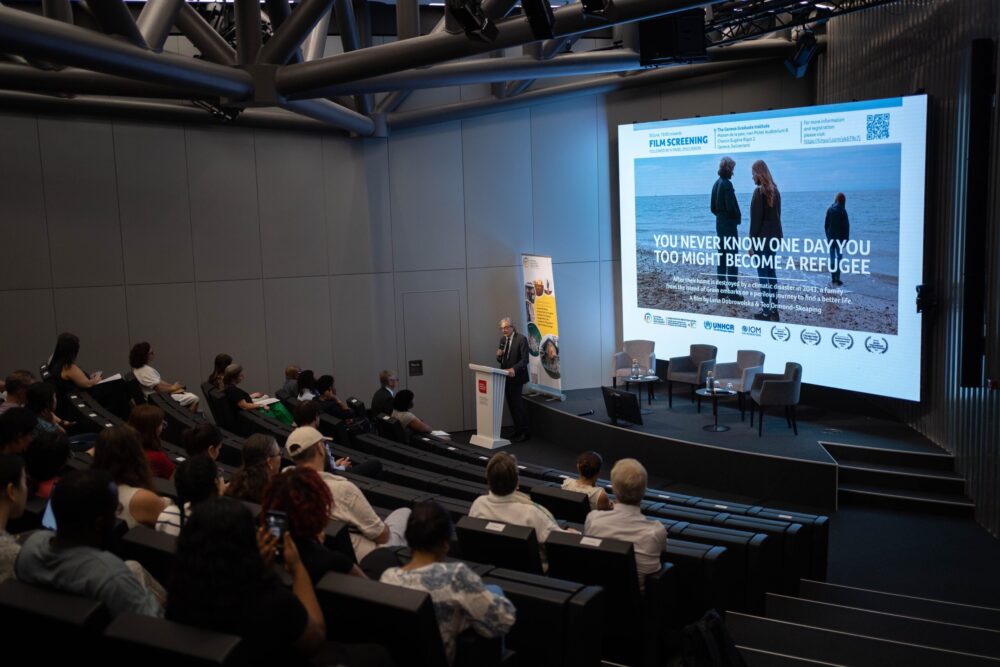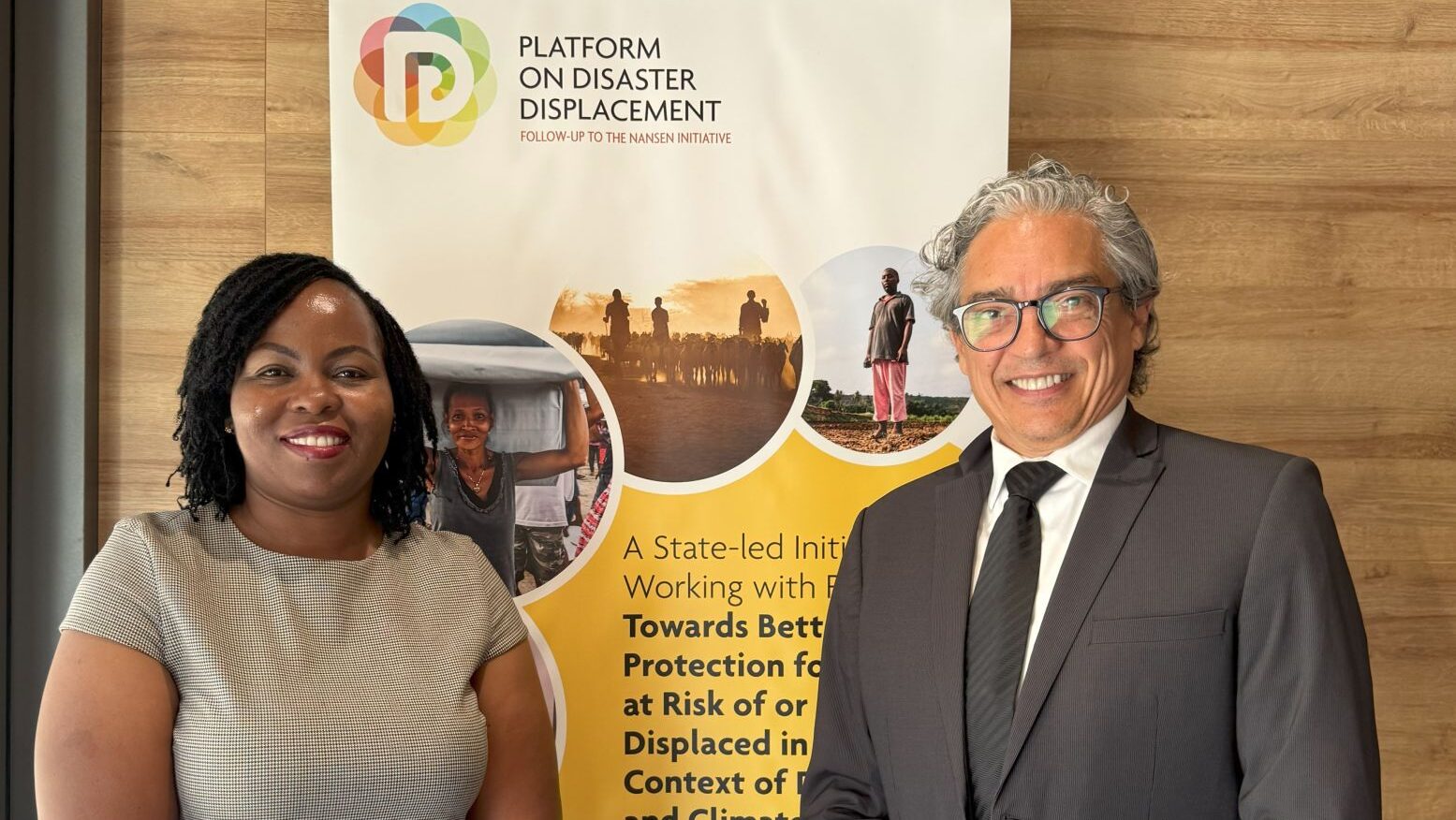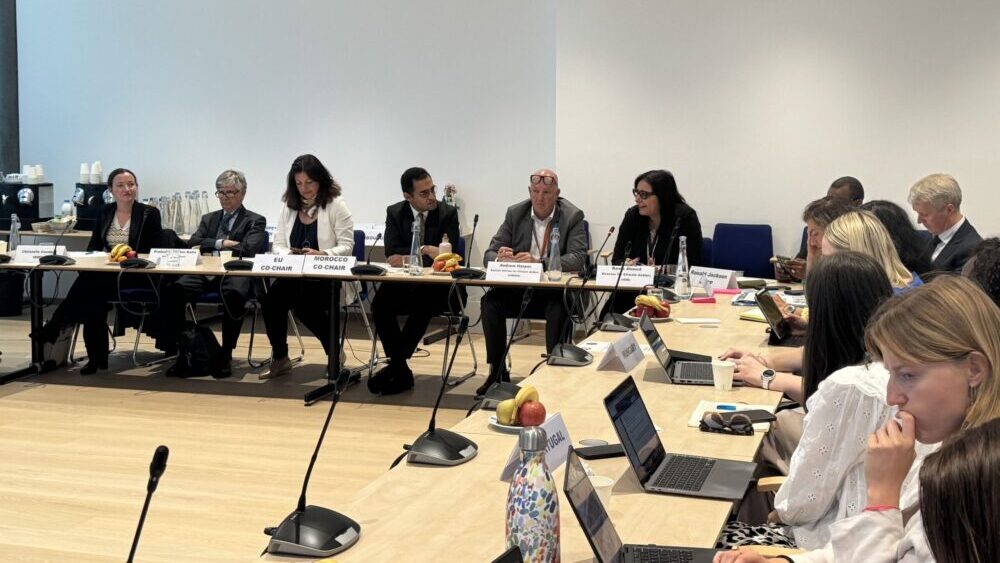Achim Steiner, Envoy of the PDD Chair introduced the Platform at the World Bank in Washington DC

Washington, United States 5 December 2016 – Mr. Achim Steiner, Envoy of the Chair of the Platform on Disaster Displacement presented and discussed the Platform, the state-led and multi-stakeholder driven follow-up to the Nansen Initiative, to the World Bank at a KNOMAD Seminar.
Mr. Achim Steiner introduced the Platform and explained the notion of disaster displacement and its connection to development efforts. The PDD intends to implement the recommendations of the Nansen Initiative Protection Agenda, to prevent, reduce and address disaster displacement. When displacement is unavoidable, policy options may include facilitating migration or planned relocation to move people away from hazardous areas to safer areas.
PDD’s work cuts across sectors of humanitarian assistance, human rights, migration management, refugee protection, disaster risk reduction, climate change mitigation and adaptation, and development. The Protection Agenda emphasizes the need for inclusive and sustainable development as an integral part of efforts to reduce and manage disaster displacement risks, before, during and following disasters.
Disaster Displacement
The notion of Disaster Displacement refers to an instance where people are forced or obliged to flee or to leave their homes as a result of a disaster or in order to avoid the anticipated effect. Disasters, both sudden and slow onset events, are linked to hydro-meteorological, climatological and geophysical hazards and it is thus important to understand displacement risks (function of hazards, exposure, and vulnerability). Disaster Displacement is multi-causal, and while climate change and natural hazards will be important, they are not the only contributing factors.
In the last years, disasters linked to natural hazards such as earthquakes, floods or droughts have affected on average 218 million people, with 26 million people displaced and 250-300 billion USD incurred in economic losses each year. The most adversely affected are the Least Developed Countries (LDCs) and Small Island Developing States (SIDS).
Development and Disaster Displacement
There are also development implications of human mobility in disaster contexts, as displacement undermines development. The poor are more likely to be displaced and less likely to benefit from governance, infrastructure and benefits of recovery processes. Therefore, it is important that migration pathways are safe and regular.
There are also new policy options to reduce displacement risks and address its root causes, including the Sendai Framework, the Sustainable Development Goals, the United Nations Framework Convention on Climate Change (UNFCCC), and the World Humanitarian Summit.
Useful Links
Read the Event Flyer
 Loading...
Loading...
Download the PDD Leaflet
 Loading...
Loading...
Read the Protection Agenda
